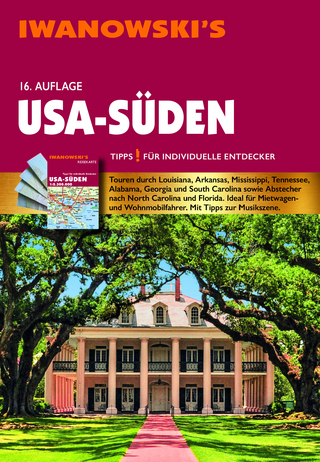
The Routledge Companion to Decolonizing Art History
Routledge (Verlag)
978-0-367-71481-9 (ISBN)
This companion is the first global, comprehensive text to explicate, theorize, and propose decolonial methodologies for art historians, museum professionals, artists, and other visual culture scholars, teachers, and practitioners.
Art history as a discipline and its corollary institutions - the museum, the art market - are not only products of colonial legacies but active agents in the consolidation of empire and the construction of the West. The Routledge Companion to Decolonizing Art History joins the growing critical discourse around the decolonial through an assessment of how art history may be rethought and mobilized in the service of justice - racial, gender, social, environmental, restorative, and more. This book draws attention to the work of artists, art historians, and scholars in related fields who have been engaging with disrupting master narratives and forging new directions, often within a hostile academy or an indifferent art world. The volume unpacks the assumptions projected onto objects of art and visual culture and the discourse that contains them. It equally addresses the manifold complexities around representation as visual and discursive praxis through a range of epistemologies and metaphors originated outside or against the logic of modernity. This companion is organized into four thematic sections: Being and Doing, Learning and Listening, Sensing and Seeing, and Living and Loving.
The book will be of interest to scholars working in art history, visual culture, museum studies, race and ethnic studies, cultural studies, disability studies, and women’s, gender, and sexuality studies.
Tatiana Flores is Jefferson Scholars Foundation Edgar F. Shannon Professor of Art History at the University of Virginia. Florencia San Martín is an assistant professor of Art History in the Department of Art, Architecture and Design at Lehigh University. Charlene Villaseñor Black is chair of the César E. Chávez Department of Chicana/o and Central American Studies and professor of Art History at the University of California, Los Angeles, editor of Aztlán: A Journal of Chicano Studies, and founding editor-in-chief of Latin American and Latinx Visual Culture.
SECTION I: INTRODUCTION SECTION II: BEING AND DOING 1. Writing Art History in the Age of Black Lives Matter 2. Being an Indigenous Art Historian in the 21st Century: How can Māori Adornment Reveal New Ways of Thinking about Art, its Histories, and Futures 3. Reinvention at the Wheel: Shaping New Histories in the Decolonization of Disability 4.The Power of Absence: An Interview with Ken Gonzales-Day 5.Art in Paradise Found and Lost 6.The Maquette -Modèles of Bodys Isek Kingelez: Envisioning Decolonial Monuments 7. Decolonizing La Revolución: Cuban Artistic Practice in a Liminal Space 8. Museums are Temples of Whiteness 9. Stepping out of the Shadow of Imperial Monochrony: A Place-centric Approach to Decolonizing Japanese Art History 10. On Failure and the Nation State: A Decolonial Reading of Alfredo Jaar’s A Logo for America 11. Light as a Feather: The Anti-capitalist Radiance of Decolonial Art History SECTION III: LEARNING AND LISTENING 12. Where’s Decolonization? The Ohketeau Cultural Center, Indigenous Sovereignty, and Arts Institutions 13. Overcoming Art History’s Meta-Narrative 14. Pathways to Art History: Pedagogy, Research, and Praxis through a Decolonial Lens 15. Pedagogies of Place: Listening and Learning in the Margins 16. The Unbearable Lightness of Adjuncting Art History 17. Decolonial Cinematic Flows: Histories, Movements, Confluences 18. Re-Indigenizing Ancient Mexican Glyphic Codices 19. (Not) Performing Pasifika Indigeneity: Destabilizing the Researcher as Decolonizing Method in Art History 20. Afterlives/Futurelives: Imagining Mermaids and recalling Ghost Dancing 21. Decolonizing California Mission Art and Architecture Studies 22.Radical Pedagogy: Environmental Performances and the Politics of Hope SECTION IV: SENSING AND SEEING 23. Spooky Art History (or, Whatever Happened to the Postcolonial?) 24. Spatial Abstraction as a Colonizing Tool 25. Dishumanizing Art History? 26.The Digital Voice as Postcolonial Proxy 27. Reflecting on Whiteness in Recent Contemporary Artwork Exploring Transnational Poland 28. Racialization, Creolization, and Minor Transnationalism: Black and Indigenous Exchange in Spanish Colonial Visual Culture 29. The Imperial Landscape of 18th-Century Anglo-Indian Portraiture 30. Unseeing Art History: Inca Material Culture 31. Debility and the Ethics of Proximity: Spatial and Temporal Immediacy in the Work of Candice Lin 32. Decolonizing Crocodiles, Repatriating Birds:Human-Animal Relations in the Historical Indian Landscape 33. “We are so many bodies, my friends”: Countervisibility as Resurgent Tactics SECTION V: LIVING AND LOVING 34. “she carried with her…a large bundle of wearing apparel belonging to herself”: Slave Dress as Resistance in Portraiture and Fugitive Slave Advertisements 3 5. Rina Banerjee’s Decolonial Ecologies 36.The Teaching is in the Making: A Relational and Embodied Experience of Anishinaabe Photographs 37. Reflections on a Latinx Decolonial Praxis for Medievalists 38. The Waters Surrounding Wallmapu, the Waters Surrounding Life 39. Dialogical Episodes for Decolonizing (Art) History 40. Inner Spaces: The Depth Imagination 41. Maria Auxiliadora da Silva: Nossa Mãe Maria of Terreiro Life and Faith on Black Grounds 42. Michael Richards: Performance as Ritual and Black-Indigenous Haptic Visuality 43. Bittersweet Histories and Tarnished Gold: Slavery’s Sounds, Sights and Silences in the Legacy of Dutch Brazil 44. A Personal Take, or Stuck in the Middle/Side and Going Nowhere: An Attempt at Imagining a Methodology for Engaging Colonial Photographic Archives, Histories, and Subjectivities SECTION VI: AFTERWORD 45. Towards a Combative Decolonial Aesthetics
| Erscheinungsdatum | 01.12.2023 |
|---|---|
| Reihe/Serie | Routledge Art History and Visual Studies Companions |
| Zusatzinfo | 97 Halftones, black and white; 97 Illustrations, black and white |
| Verlagsort | London |
| Sprache | englisch |
| Maße | 174 x 246 mm |
| Gewicht | 1800 g |
| Themenwelt | Kunst / Musik / Theater ► Kunstgeschichte / Kunststile |
| Reisen ► Reiseführer ► Nord- / Mittelamerika | |
| Geisteswissenschaften ► Geschichte ► Hilfswissenschaften | |
| Sozialwissenschaften | |
| ISBN-10 | 0-367-71481-7 / 0367714817 |
| ISBN-13 | 978-0-367-71481-9 / 9780367714819 |
| Zustand | Neuware |
| Haben Sie eine Frage zum Produkt? |
aus dem Bereich


